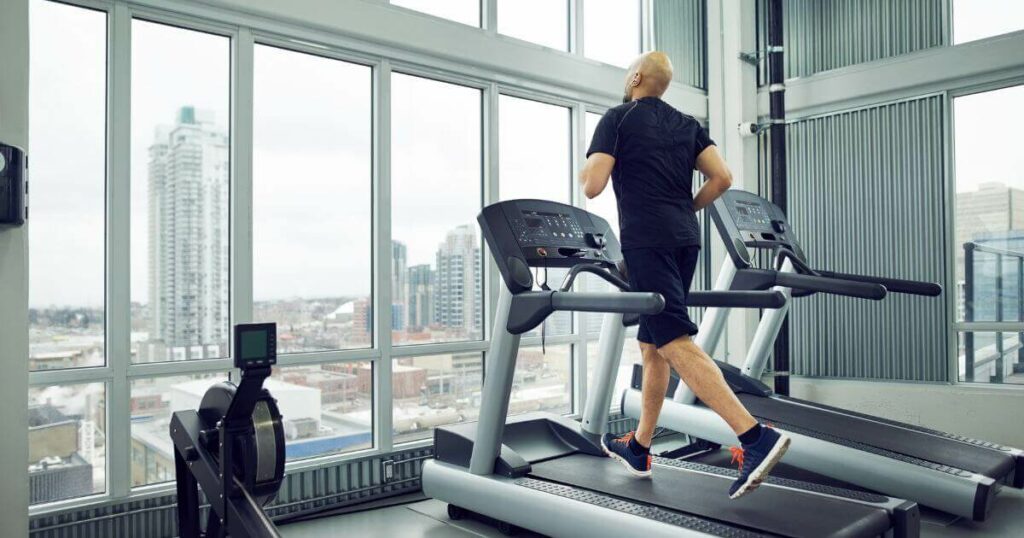
Many people include physical activity in their daily routines for weight loss or muscle mass building. However, regular exercise can do much more than that.
Cardio exercise, also known as aerobic exercise, brings many benefits to heart health. In addition, cardio workouts can strengthen your heart and blood vessels, lower blood pressure and LDL or “bad” cholesterol, improve oxygen circulation, and reduce the risk of some diseases, including diabetes and stroke.
Thanks to all these reasons, it’s considered the best type of exercise for the cardiovascular system! Do you want to know the best cardio workout for heart health and better understand how it can favor your body? Here’s everything you need to know.

When people are advised to add exercise to their routines and lead a more active life, there’s a common question: “What are the best cardio workouts for heart health?”
The answer is short in most cases: as long as you do some physical activity, you can choose any type of exercise you like. Even if you only take a 30-minute brisk walk daily, you’ll notice a big difference.
However, to make your heart muscle stronger and healthier, you should exercise regularly. Ideally, physical activity should be in your daily routine.
Staying active through cardio workouts can preserve the heart’s function, help you lose weight, and reduce some health risks. Actually, people who don’t exercise frequently are nearly twice as likely to develop heart disease than active people.

When it comes to aerobic exercise, running, jogging, and biking are good ideas. All these activities can raise your heart rate and make you breathe harder. You can also consider swimming or walking if you are just starting out or have joint problems.
Other cardio exercises that can improve heart health include playing tennis or soccer, dancing, jumping rope, circuit training, kickboxing, and water aerobics.
As mentioned, the activity you choose doesn’t matter. What’s important is that you like and enjoy the exercise you choose. If you’re interested in what you’re doing, it’s easier to make it part of your daily routine.
Whether you only want to improve your health or suffer from a heart condition, developing a regular exercise routine can help tremendously. Most experts recommend doing physical activity at least 150 hours a week, or 30 minutes a day for five days a week.
However, you should vary both the types of exercise and its intensity on different days. Besides helping you use different muscle groups, this strategy reduces the risk of overuse injuries.
Additionally, it can help you stay interested in physical activity, making it easier to incorporate into your daily routine and leverage all its benefits.
Some experts also recommend moderate-intensity exercise for at least 30 minutes two or three days a week. While doing these exercises, you may experience hard breathing and break a sweat but still be able to talk.
In addition to moderate-intensity exercise, an ideal routine should also include an hour of a longer activity. It could be low-intensity (a round of golf or a long bike ride) or high-intensity (Zumba).

At this point, you should have at least three days covered. On the fourth day, you should include high-intensity training, as it can stimulate the muscles and induce different responses from both the heart and the blood vessels.
If you want to include high-intensity training in your exercise routine, you can do the following:
This exercise strategy is known as High-Intensity Interval Training or HIIT. While there are many types of HIIT, you can try the 4×4 method, which involves working out in four-minute intervals and doing four total cycles.
Besides cardio workouts, your heart and the whole body can also benefit from strength training one or two days a week. However, it doesn’t mean you have to lift heavy weights in the gym.
Strength or resistance training comes in several types, too. Some alternatives include pilates, body weight calisthenics, Thai chi, or even strength yoga.
Other exercises you can do at home, such as push-ups, pull-ups, and squats, are also effective forms of weight training, as they allow you to use your own body weight.
Regardless of the activity or exercise program, it’s important to measure the intensity. There are two ways to do this: paying attention to how you feel and checking your heart rate. The second option is more objective.
To measure your exercise intensity, you must see how hard your heart beats during physical activity. These are the steps you should follow:
The heart rate reserve or HRR method can help you calculate the right target heart rate zone. Follow these steps:
There’s no ideal heart rate for a cardio workout for all people. Each person must calculate their own.
However, the American Heart Association (AHA) says a good heart rate for a cardio workout should be as explained below:
The heart rate goal for a cardio workout for a person who is just starting to exercise should be closer to the maximum heart rate’s lower end. However, it can be built up gradually towards the 85% mark.
Essentially, yes, you can! However, anyone suffering from heart disease should consult with their doctor and seek help from a personal trainer (if possible) before starting an exercise routine, especially if it includes resistance training.
An inactive lifestyle is a risk factor for a heart attack and several diseases or conditions. However, aerobic exercise can be of great help.
Besides being key to losing weight, cardio workouts have other health benefits, even if you’re only brisk walking.
Therefore, if you want to keep your heart healthy or improve your fitness level, it should be part of your daily routine!
Copyright © CardiacKrock.com. 2022 All rights reserved. | Sitemap